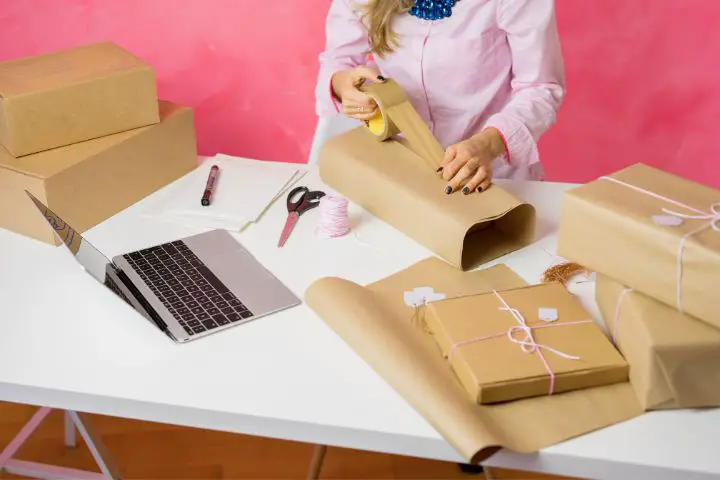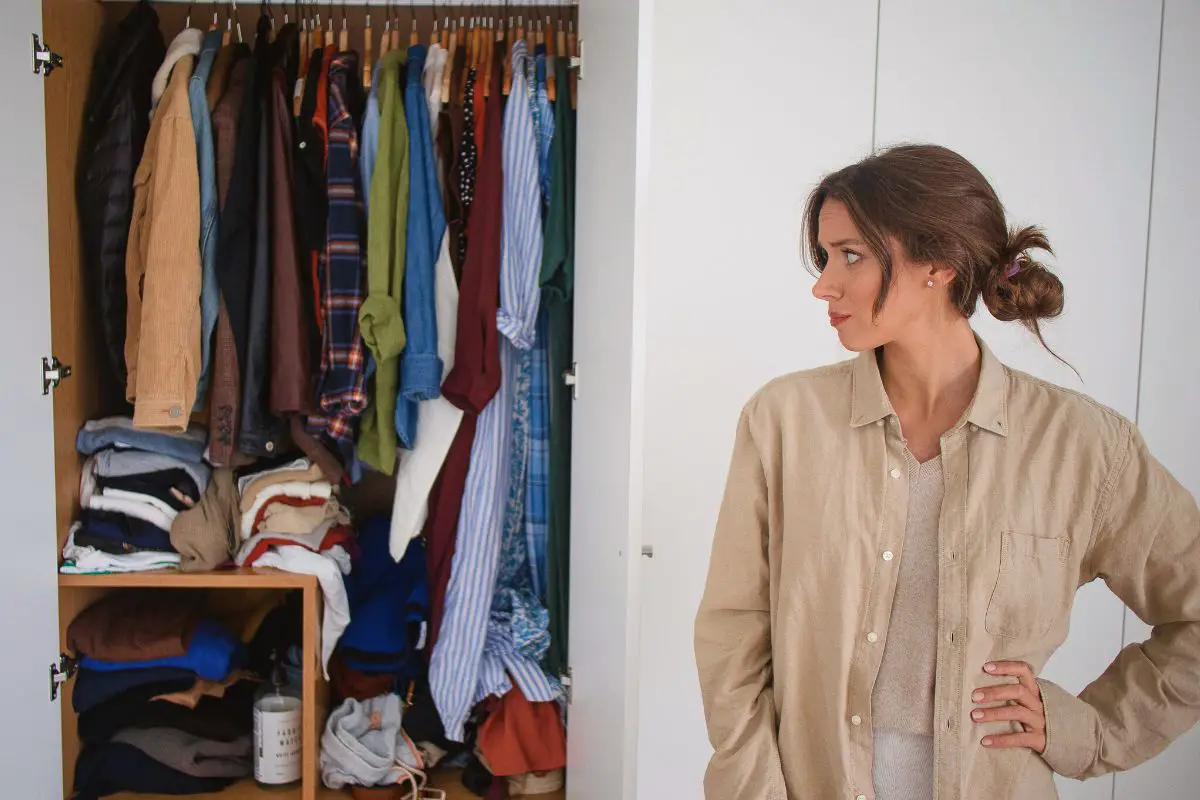7 Ways to Sustainably Declutter: Clearing Out Clutter With a Green Mindset
Clutter, in its simplest form, refers to an excessive accumulation of items, often to the point where it becomes difficult to use or enjoy your living spaces effectively. It could be a pile of old magazines, a closet full of rarely worn clothes, or a garage filled with unused equipment. These are items that have been collected but are no longer needed, used, or loved.
The impact of clutter goes beyond the physical space. It can lead to stress, anxiety, and decreased productivity. Imagine trying to find an important document in a pile of papers or attempting to relax in a room filled with unused items. The chaos and disorder can be mentally draining and can even affect our emotional well-being.
The Need for Sustainable Decluttering
Sustainable decluttering is a progressive approach to organizing and tidying up your living spaces. It’s not just about creating a clean, orderly environment but doing so in a way that respects and preserves the planet. It’s also about contributing to the larger goal of waste reduction, resource conservation, and overall sustainability.
Consumerist culture plays a significant role in creating clutter. The constant push for the latest gadgets, fashion trends, or home decor can lead to a cycle of buying, discarding, and buying again.
By choosing sustainable decluttering, you can break this cycle. Instead of mindlessly discarding items, you can find ways to reuse, recycle, or responsibly dispose of them, reducing your environmental footprint and promoting a more sustainable lifestyle.
7 Ways to Declutter Sustainably
Here are some practical strategies to declutter sustainably, each contributing to a cleaner space and a healthier environment.
- Sort Items

The first step toward sustainable decluttering is sorting your belongings. This could involve designating a day to go through your wardrobe, separating clothes into ‘keep,’ ‘donate,’ ‘sell,’ and ‘recycle’ piles. This initial sorting phase is a crucial foundation for sustainable decluttering, setting the stage for informed decisions about each item.
- Reuse, Recycling and Disposal
Once sorted, assess each item’s potential. For instance, an old ladder might serve as a unique bookshelf or broken electronics could be taken to a recycling facility. Things that can’t be reused or recycled should be marked for responsible disposal.
- Proper Disposal
For items that can’t be reused or recycled, it’s important to dispose of them responsibly. This might mean taking old batteries to a designated disposal facility or arranging for a special collection for larger items like furniture. Always consider the environmental impact of disposal and follow local waste management guidelines.
- Storage Solutions
For items you’re not ready to part with, consider sustainable storage solutions. Services like Safe Store Containers provide secure, flexible storage options, allowing you to hold onto items until you’re ready to use them again, sell them, or find them a new home.
- Donation
Donating items is a wonderful way to declutter sustainably. Clothes that no longer fit, books you’ve finished reading, or toys your children have outgrown can find a new life when donated to local charities or community centers.
- Selling Items Online
Online platforms or virtual marketplaces offer an excellent avenue for selling unwanted items. This not only helps in decluttering but also promotes the reuse of items, extending their lifecycle and reducing the demand for new products.

- Swapping Items With Friends or Family
Organizing a swap meet can be a fun and sustainable way to declutter. For example, you could host a book exchange party, allowing everyone to leave with something new to read without buying new books.
Incorporating these strategies into your decluttering process can make a significant difference, turning a potentially wasteful activity into a sustainable one.
Tips for Maintaining a Clutter-Free Space Sustainably
Maintaining a clutter-free space is an ongoing process. Here are some tips to help you sustainably keep your area organized:
- Practice Mindful Purchasing
Before making a purchase, take a moment to consider if you truly need the item. For example, if you’re tempted by a sale on kitchen gadgets but already have a well-stocked kitchen, it might be best to pass. By practising mindful purchasing, you can prevent the unnecessary accumulation of items, reducing potential clutter and waste.
- Embrace Minimalism
Adopting a minimalist lifestyle can significantly reduce clutter. This doesn’t necessarily mean living with the bare minimum but making intentional decisions about what you truly need and value. By reducing the number of items you own, you can create a more organized space and reduce waste.
- Repair Before Replacing
Often, the first instinct when something breaks is to replace it. However, repairing items can extend their life, reduce waste, and save money. Whether it’s mending a tear in a shirt or fixing a leaky faucet, consider repair options before buying a new one.
- Buy Secondhand

Purchasing items secondhand is a great way to reduce demand for new products and minimize waste. Whether it’s furniture, clothing, or electronics, consider checking thrift stores, online marketplaces, or local garage sales before buying new.
- Share or Borrow Items
If you need an item for a short period or infrequent use, consider borrowing it from a friend or neighbor. Similarly, if you have items that you use infrequently, consider lending them out. This can reduce the overall number of items owned and promote a sense of community.
- Create a Dedicated ‘Outbox’
Have a box or designated area in your home for items you decide to part with. Once it’s full, donate, sell, or recycle the items. This can make the process of letting go of items easier and more routine.
By incorporating these tips into your routine, you can maintain a clutter-free, organized space while also supporting sustainability. Remember, every small action contributes to a larger impact on the environment.
The Impact of Sustainable Decluttering on Mental Health
Sustainable decluttering extends beyond establishing an uncluttered environment or minimizing waste; it also has significant implications for mental health.
- The Psychological Benefits of a Clutter-free Space
Living in a clutter-free environment can significantly enhance your mental well-being. A tidy, organized space can reduce stress and anxiety, improve focus, and boost productivity.
For instance, consider the difference between a kitchen with clean countertops and one cluttered with unused appliances, old mail, and miscellaneous items. In a cluttered kitchen, preparing a meal might feel overwhelming and stressful. However, the task becomes more enjoyable and efficient in a clean, organized kitchen.

The sense of calm and order in a decluttered space can make daily tasks easier and more pleasant, contributing to improved mental health. In fact, according to a study by Princeton University, the environment can positively or negatively impact the ability to complete tasks as well as the overall mental health.
Furthermore, a study by the University of Connecticut found a direct link between clutter control and stress reduction. By removing or managing clutter, individuals reported feeling happier and less anxious. This also led to increased self-confidence.
- The Satisfaction of Making Sustainable Choices
Making environmentally-friendly decisions, such as choosing to recycle an item instead of throwing it in the trash, can bring a sense of accomplishment and satisfaction. This positive feeling stems from knowing that your actions are contributing to a larger cause—the health and sustainability of the planet.
For example, consider the act of donating a bag of clothes to a local charity instead of throwing them away. Not only does this declutter your closet, but it also helps those in need and reduces waste, bringing a sense of fulfilment and purpose. Moreover, it prevents usable items from ending up in a landfill, which is a rewarding and purposeful act.
The Role of Technology in Sustainable Decluttering
Numerous apps and online platforms have emerged to aid in sustainable decluttering. There are mobile applications that allow users to sell preloved items ranging from electronics to clothing, making it easier to find new homes for things that might otherwise be discarded.
Additionally, there are platforms dedicated to donating or giving away items within local communities, which not only helps in decluttering but also prevents usable items from ending up in landfills. These digital tools are transforming how many people approach decluttering, making it more convenient and environmentally friendly.

Another good example is several mobile applications specifically designed to combat food waste by connecting community members to share surplus food. This not only helps declutter kitchens but also significantly reduces food waste.
These examples highlight how technology can effectively aid in selling, donating, or recycling items, contributing to sustainable decluttering.
Final Thoughts
Sustainable decluttering emerges as a powerful practice that transcends personal organization, intertwining with mental well-being and environmental stewardship. Mindful habits, innovative digital tools, and a forward-thinking perspective characterize this approach. These elements transform decluttering from a mundane task into a meaningful contribution to sustainability.
The various benefits of sustainable decluttering are evident. The satisfaction derived from making environmentally conscious decisions complements the mental clarity that comes from a decluttered space, underscoring the comprehensive advantages of this practice.
In conclusion, the journey toward sustainable decluttering is a continuous one, filled with opportunities for personal growth and caring for the environment. Each step taken in this direction contributes to a larger, global movement toward sustainability. Together, these individual efforts can make a significant difference, one decluttered space at a time.






